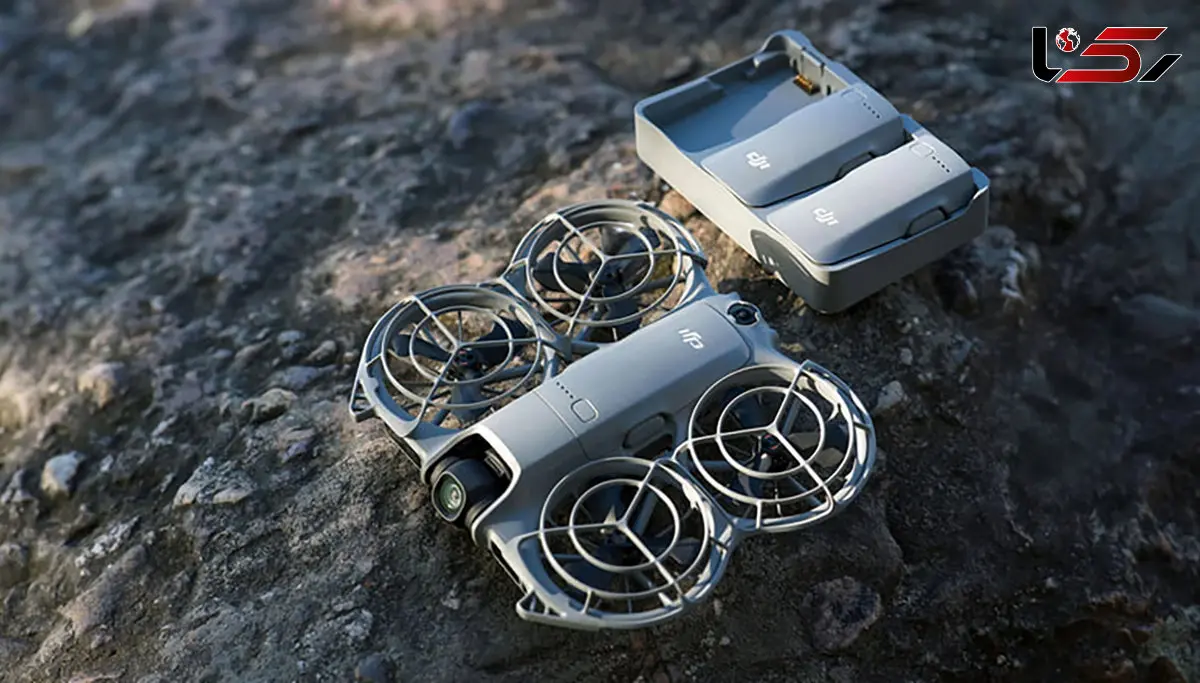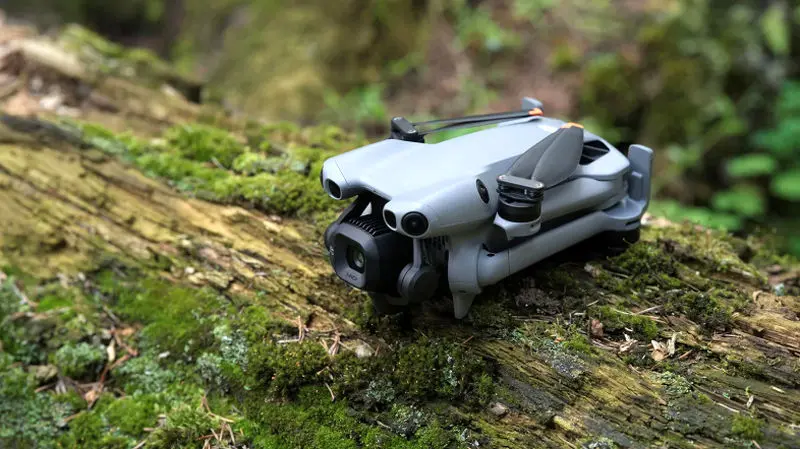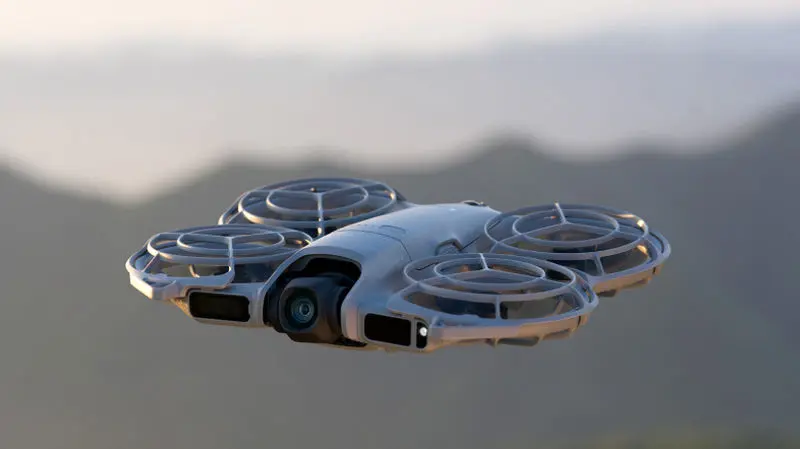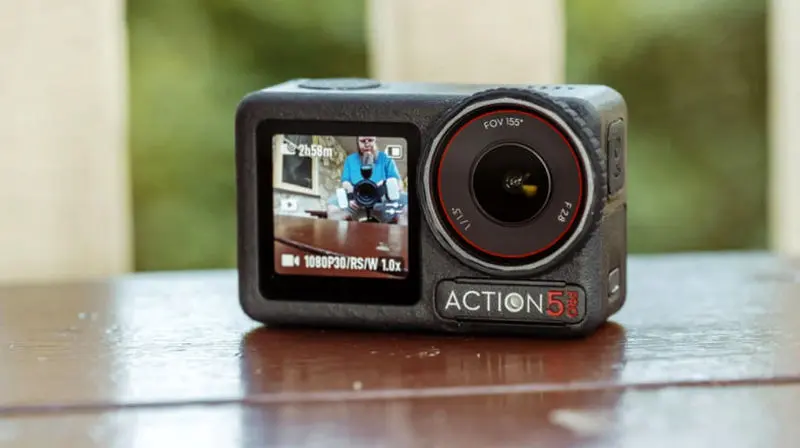DJI's Neo 2 Drone Won't Land in the US as December Ban Looms
Why the DJI Neo 2 Drone Has Yet to Hit the Market After Production
Rokna Social Desk: DJI’s Neo 2 drone faces a looming December ban in the US, threatening its availability in stores and raising concerns for pilots and content creators who rely on the popular device.

DJI Neo 2 (Credit: DJI)

Jim Fisher
Principal Writer, Cameras After 14 years covering photo gear, Jim knows his f-stops. You'll often find him out in the woods or in a graveyard with a camera or two in hand.
According to Rokna, citint the technical PC Magazine, today marks the launch of DJI's latest drone, the Neo 2, a sequel to last year's Neo. It looks just as neat as its predecessor—it's tiny, takes off from and lands in the palm of your hand, and records 4K movies with pre-programmed flight paths—selfie fans will love it. But just like the Mini 5 Pro, the Neo 2 isn't coming to the US. You can get it in other countries that allow consumer drones, but not stateside. The company has experienced hurdles importing products into the US, and faces a ban set to go into effect next month. Read on to find out what's going on with DJI drones in the US, and why the situation could soon get much worse.
Why Is DJI Under Scrutiny?
DJI announced several products this year, but all have faced delays or haven't been released in the US at all. In a blog post, DJI places the blame on US Customs and Border Protection (CBP), while CBP cites violations of the Uyghur Forced Labor Prevention Act as the reason to hold imports. DJI denies violating this law. Regardless of who you believe, it's been feast or famine when shopping for DJI gear all year—there were times when you could get pretty much any product delivered in a day, and others when everything from DJI was sold out.

The Mini 5 Pro is the best drone that you can't buy in the US. (Credit: DJI)
All the while, DJI faces a blanket ban on marketing future releases in the US. The 2024 National Defense Authorization Act (NDAA) calls for a security audit on the company's product line. If it's not performed by Dec. 23, DJI will be added to the FCC Covered List, which means that it won't be able to introduce new products into the US at all.
DJI has met with all the agencies that could perform the audit and sees no sign of progress, Adam Welsh, the company's Head of Global Policy, tells me. He points to the fact that any one of five agencies (the Department of Defense, Department of Homeland Security, Director of National Intelligence, Federal Bureau of Investigation, or National Security Agency) could complete the audit by law. Since no specific agency has the responsibility, the audit has become a hot potato, with no one stepping up to complete the work. Welsh is also skeptical that a security audit, even if started immediately, could be completed within a six-week window.
That doesn't quite answer the question as to why the feds have turned a magnifying glass toward the DJI brand. Welsh tells me that he believes the attention started after the Pentagon noticed that soldiers were buying DJI drones with personal funds and using them on bases and in theaters of operations without clearance. The Pentagon specifically named DJI in a 2017 memo that asked soldiers to end the practice. In ensuing years, DJI was added to the Commerce Department's Entity List surrounding its alleged role in China's Uyghur genocide, which DJI denies. Simply put, DJI has been on the US government's radar for years.

The Neo 2 is the latest DJI drone to go on sale internationally, but not in the US. (Credit: DJI)
What Does a DJI Ban Look Like?
Assuming nothing changes, DJI will be added to the FCC Covered List on Dec. 23, which means that it won't be able to release new products in the US. The FCC holds a lot of power over the consumer electronics market—it must approve every device with wireless components before it's allowed to go on sale in the US. DJI wouldn't be the first Chinese brand on the list; Huawei and ZTE were added in 2022.
Pretty much everything DJI makes has some sort of wireless component built in, so that puts a kibosh on any future introductions. While most associate the brand with its drones, DJI also makes cameras and smartphone gimbals under its Osmo imprint, as well as cinema equipment under the Ronin banner.
Your Daily Dose of Our Top Tech News
What about products that have already been approved? The FCC just gave itself the power to revoke product approval retroactively. That leaves the door open for products that are currently on sale to be pulled from retail shelves. It's not an automatic ban like the one in the NDAA, however, since the commission would have to take up products on a case-by-case basis.
As for items you already own and use, the FCC prohibitions are about sale, not use. Your DJI drone, camera, or gimbal will continue to work just as before. However, you may have a hard time getting it repaired and will have to look to another brand when it's time to replace your equipment.

The Potensic Atom 2 is an excellent performer among value drones, but doesn't compete with DJI's midrange and professional line when it comes to picture quality. (Credit: Jim Fisher)
Effects on the Drone Industry
When it comes to consumer drones, there's DJI, and then there's everyone else. DJI beats other brands in camera quality and safety features, so losing access to its products will simply be devastating for drone enthusiasts, vloggers, filmmakers, and others who use DJI gear for aerial video and photography. The closest I've tried—the Potensic Atom 2—is a good performer among budget drones, but I haven't seen any competitors match the Mini 4 Pro or Mavic 3 Pro in terms of camera quality or aerial performance.
Professionals who rely on drones for business, farmers who use them to monitor fields, and law enforcement officers who use them for search and rescue are left in a similar lurch. DJI's Welsh tells me that around 450,000 US individuals use DJI drones to earn a living; it's estimated to be a $116 billion industry. Those jobs are in jeopardy, and a survey of members of the Drone Service Providers Alliance shows that two-thirds of its membership expect to go out of business without access to DJI drones.
Drone pilots and content creators who rely on DJI equipment have reason to be concerned about the forthcoming ban. The Drone Advocacy Alliance, which describes itself as a grassroots advocacy coalition (and includes DJI as a member), is urging drone owners to contact their congressional representatives and senators.

DJI's other product lines, including the Osmo Action series, are covered under the NDAA ban. (Credit: Jim Fisher)
Waiting in the Wings?
You still have a few weeks to get a DJI drone if you want one, but what about next year? I've mentioned the Potensic Atom 2 as a good performer at the entry level; I'd compare it favorably with the DJI Mini 2 4K. The Antigravity A1, the first drone with an Insta360 camera built in, is also set to go on sale next year. The A1 is one to watch, but I will hold off on a recommendation until I've had a chance to review it.
GoPro and Insta360 offer alternatives to DJI's action camera line, though neither has an answer for the Osmo Pocket 3, which is one of the most popular vlogging cameras among YouTubers. Both brands make smartphone gimbals too, so DJI doesn't have a stranglehold on these categories as it does with drones. For full-size gimbals, Zhiyun is the obvious fallback brand for Ronin owners, though its line isn't as well-suited for use for cinema and commercial production.
For now, you can still get many of DJI's products. Make sure to read our buying guides if you're in the market for a drone, gimbal, action cam, or vlogging camera. We'll be closely monitoring the latest developments in the potential DJI ban, so stay tuned to PCMag for all your drone coverage.
Send Comments